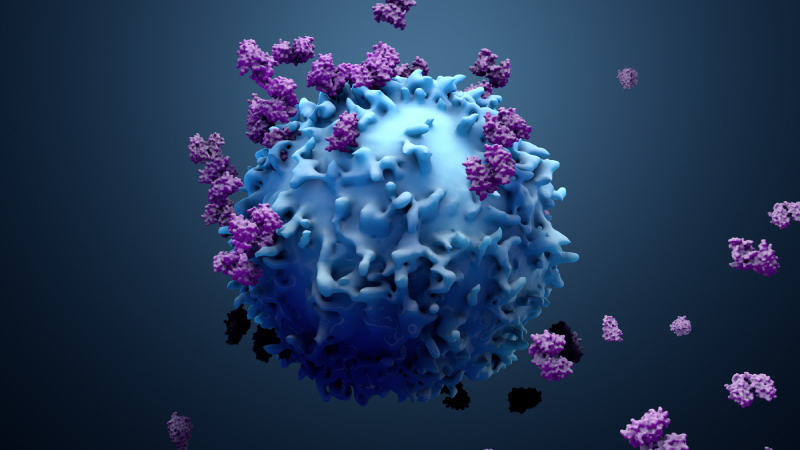
Treatment strategies established for acute myeloid leukemia (AML) were effective for patients with myelodysplastic syndromes (MDS) or chronic myelomonocytic leukemia (CMML) with NPM1 mutations at diagnosis, according to data presented by Jamile Shammo, MD, at the Society of Hematologic Oncology 2024 Annual Meeting in Houston, Texas.
“Our data add to the supporting evidence that NPM1-mutated myeloid neoplasms, even with low marrow blasts, are consistent with AML and benefit from an AML treatment approach,” Dr. Shammo and colleagues said.
Treatment Strategies for NPM1-Mutated Patients
The study assessed 40 patients with NPM1-mutated MDS (n=30) or CMML (n=10) treated at the Moffitt Cancer Center from 2009 to 2022. Of the patients, 22 (55%) had bone marrow blasts less than 10% and 18 (45%) had bone marrow blasts of 10% or more. Nineteen (47.5%) had high-risk or very high-risk disease per Revised International Prognostic Scoring System (IPSS-R) criteria.
Seventeen (42.5%) patients received intensive frontline therapy with a cytarabine-based regimen, whereas the remainder received non-intensive frontline therapy with a hypomethylating agent (HMA)-based regimen (none received HMA plus venetoclax).
The authors reported that median overall survival (OS) was longer for patients who received intensive versus non-intensive frontline therapy (63 vs 35.2 months; P=0.0295). Intensive therapy also was associated with better median OS in patients with blasts of 10% or more (not reached [NR] vs 14.1 months; P=0.030) and those with blasts less than 10% (NR vs 31.2 months; P=0.020). Additionally, median OS was improved in patients who received hematopoietic stem cell transplantation (70.8 vs 31.1 months; P=0.001).
Age, IPSS-R score, blasts, treatment intensity, and transplant all had a confirmed impact on survival. Multivariate regression confirmed a survival impact for intensive therapy (hazard ratio [HR], 0.25; 95% confidence interval [CI], 0.10–0.62; P=0.003) and transplant (HR, 0.30; 95% CI, 0.13–0.71; P=0.005).
“Evaluation of larger data sets that confirm these observations may help guide future treatment recommendations for these patients,” Dr. Shammo and colleagues concluded.
Reference
Shammo J, Noshad S, Bilano V, et al. Clinical characteristics and outcomes in complement-inhibitor-treated patients with paroxysmal nocturnal hemoglobinuria in the United States: a retrospective claims database analysis. Abstract #MDS-536. Presented at the Society of Hematologic Oncology 2024 Annual Meeting; September 4-7, 2024; Houston, Texas.






 © 2025 Mashup Media, LLC, a Formedics Property. All Rights Reserved.
© 2025 Mashup Media, LLC, a Formedics Property. All Rights Reserved.